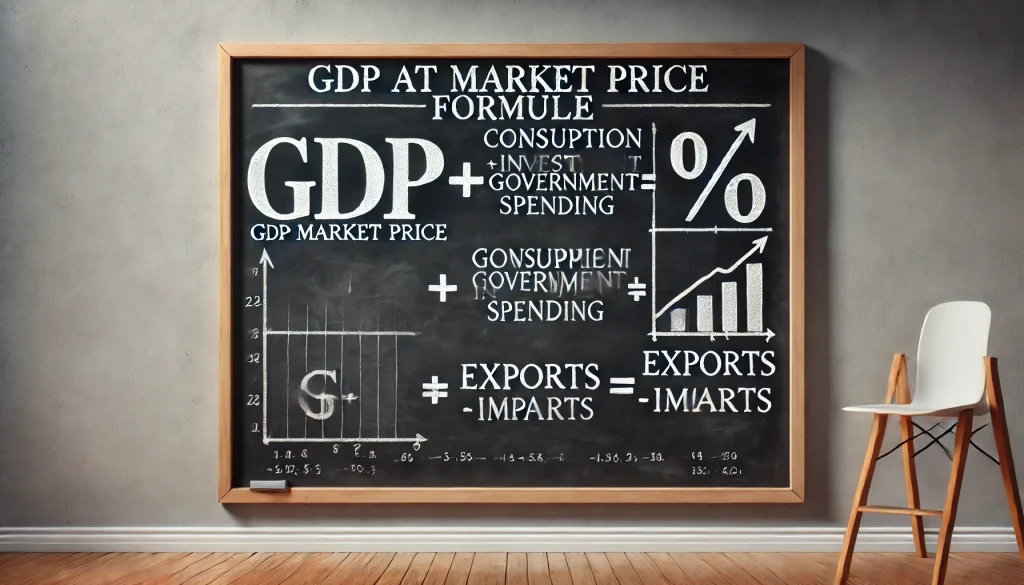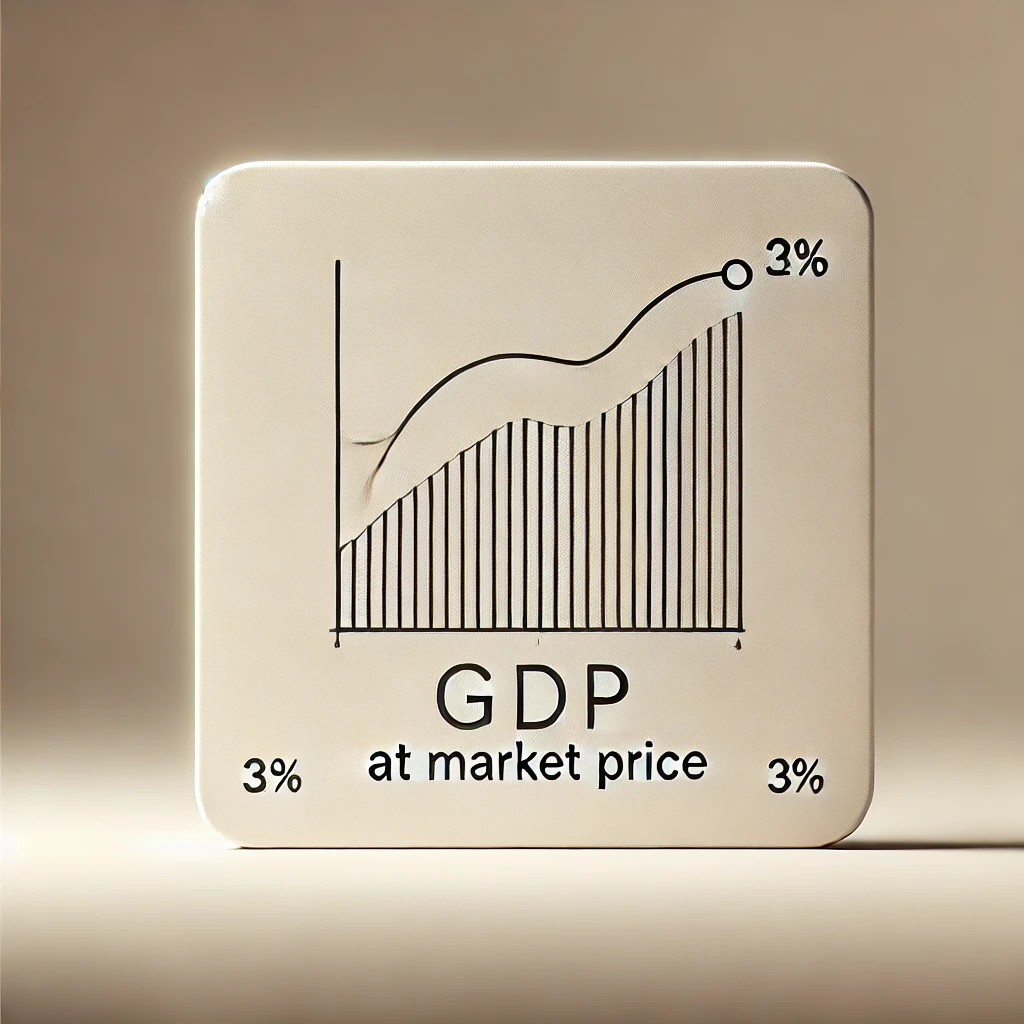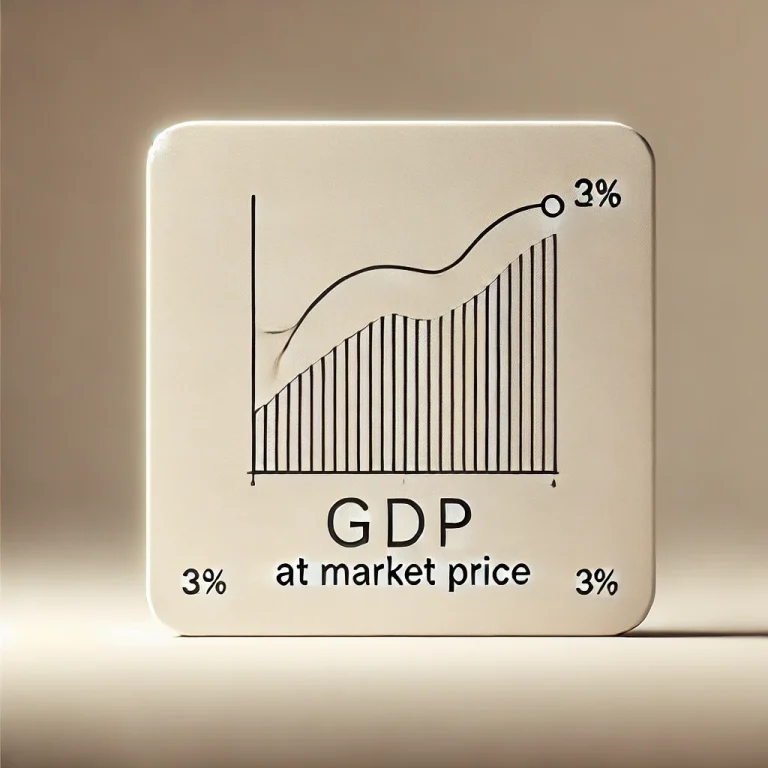Economic parlance often uses the term GDP at market price to refer to the overall monetary value of goods and services produced in a country within a particular period. It thus presents an important measure of the economic performance of a nation, taking into account market prices, taxes, as well as subsidies. In this article, we will discuss the details of GDP at market price, describe related concepts, formulate, and differentiate the same with GDP at factor cost.
What is GDP?
Gross Domestic Product, or GDP, can be defined as the sum of economic activity done domestically within a country. It can be referred to as the total value of goods and services produced in a given period. GDP is normally calculated on a quarterly or annual basis. This measure can be a way of checking the health of the economy of a nation.
Before discussing GDP at market price, it’s crucial to understand the three important terms:
- Factor Cost: This is the sum of expenditures that firms make on producing goods and services, such as wages, rent, interest, and profit. It does not include taxes and subsidies.
- Basic Price: This is the sum of the production costs plus taxes. It excludes taxes on products and subsidies.
- Market Price: The market price is determined by adding excise duties and VAT to the basic price and deducting a subsidy. It indicates the market price at which consumers will be ready to pay in the market for products and services.

GDP at Market Price
Gross domestic product at market price essentially means the total value of all goods and services produced within a country, calculated at the current market price. All indirect taxes, value-added tax, and excise duty, among others, are included, while all subsidies provided by the government are excluded. In a way, it is the total revenue the economy generates from producing goods and services in a year at market prices.
GDP at Market Price Formula
The formula to calculate GDP at market price is as follows:
GDP at Market Price = GDP at Factor Cost + Indirect Taxes – Subsidies
This formula highlights the relation between GDP at market price and GDP at factor cost while factoring in the government’s role through taxes and subsidies.
Explanation of the Terms in the Formula:
- GDP at Factor Cost: It is the sum of the value of all goods and services produced within the economy. It is valued at factor prices which means taxes and subsidies are not included in it.
- Indirect Taxes: They are levied by the government on sales, excise duties, etc. They add to the price of goods and services at different levels in the economy.
- Subsidies: These refer to financial assistance granted to enterprises by the government and aim at bringing down the prices of select products and services for consumers.
Why is GDP at Market Price Important?
The more realistic estimate of a nation’s economy is obtained through GDP at market price because it reflects what consumers actually pay for goods and services. The figure is measured by governments to assess economic health, budget planning, and adjusting fiscal policies. For instance, increases in the GDP at market prices generally represent strong growth in an economy, while decreases can represent economic depressions.
The Role of Taxes and Subsidies in GDP
- Taxes: Whenever the government imposes taxes such as VAT or excise duties on goods and services, it increases the cost of production of that good or service, and then subsequently increases the cost to consumers in the market. Therefore, the GDP at market price includes these taxes to represent the actual cost to consumers.
- Subsidies: In contrast, subsidies reduce the cost of producing goods so that such goods are sold at a cheaper price. As a result, subsidies are also subtracted from GDP at market price since they artificially reduce the market price.
Real vs. Nominal GDP at Market Price
- Nominal is the quantity of Nominal GDP at market price gives the total value of goods and services produced in a country using prevailing current prices that harbor inflation factors.
- On the other hand, the real GDP at market price is an inflation-adjusted figure, thus giving better insight into the real-time economic growth over time.

GDP at Factor Cost
Gross domestic product at factor cost is gross domestic product which is calculated exclusively with consideration of the input costs incurred by producers and excluding taxes and subsidies. It doesn’t consider the effects of taxes levied by the government or the subsidies provided. The formula for GDP at factor cost is:
GDP at Factor Cost = GDP at Market Price – Indirect Taxes + Subsidies
This alternative approach focuses more on the cost structure of production rather than the final market valuation of products.
Difference Between GDP at Market Price & Factor Cost
The distinction between GDP at market price and GDP at factor cost primarily lies in the treatment of taxes and subsidies:
| Basis | GDP at Market Price | GDP at Factor Cost |
|---|---|---|
| Definition | Includes market price, indirect taxes, excludes subsidies | Excludes taxes, includes subsidies |
| Taxes | Includes all indirect taxes like VAT, excise | Excludes taxes imposed on goods and services |
| Subsidies | Excludes subsidies provided by the government | Includes subsidies as they lower production cost |
| Used For | Measures consumers’ final prices | Measures producers’ costs |
Conclusion
That is to say, GDP at market price is greatly significant in measuring the total economic activities of the country. This is so because it takes into account the market value of all goods and services produced within the economy and takes indirect taxes into account but excludes subsidies. In that regard, it’s worth highlighting that the conceptual variation between the two Gauges of measurement-being GDP at the market price and GDP at factor cost be crucial for an accurate economic analysis since the former is on the consumer price level, while the latter is on the producer cost level.
GDP at Market Price Formula FAQs
What is the GDP at factor cost?
GDP at factor cost is the total value of goods and services produced in the country, calculated based on the cost of factors of production like labor and capital, excluding taxes and subsidies.
How do indirect taxes affect GDP at market price?
Indirect taxes increase the market price of goods and services, thus inflating the GDP at market price compared to GDP at factor cost.
What role do subsidies play in calculating GDP?
Subsidies reduce the price of goods and services, and thus are subtracted when calculating GDP at market price to reflect true market conditions.
How is GDP at market price different from GDP at factor cost?
The key difference lies in the inclusion of taxes and exclusion of subsidies in GDP at market price, while GDP at factor cost focuses on production costs without these adjustments.
Why is real GDP at a market price more reliable for economic analysis?
Real GDP at market price accounts for inflation, offering a clearer picture of economic growth by comparing production outputs over time without the distortion of price increases.


